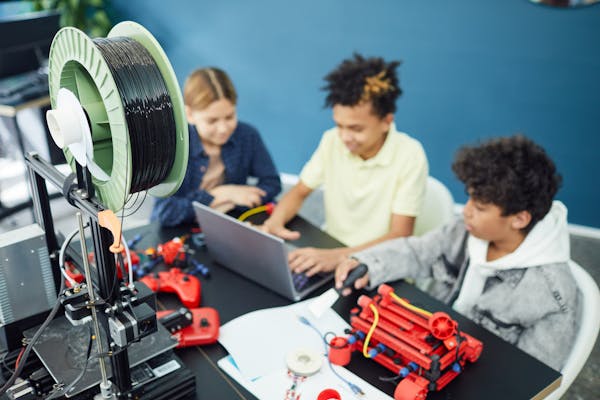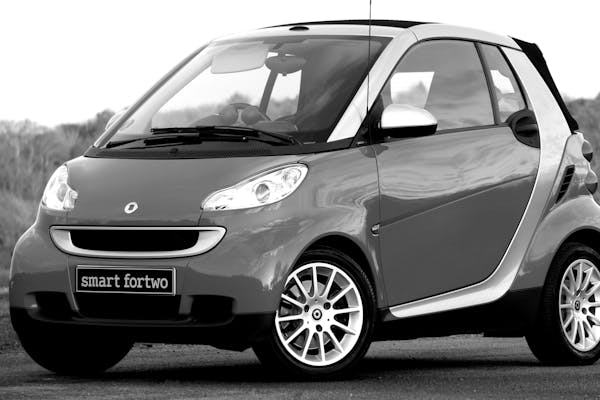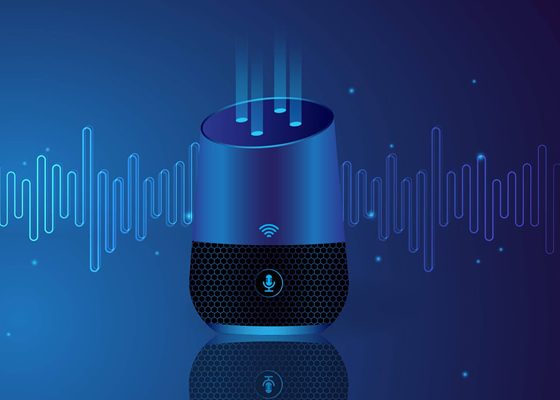In the 21st century, the fusion of technology and daily life has reached unprecedented heights. Central to this evolution are the myriad applications of smart technology, which have transformed how we live, work, and interact with our environment. From smart homes to healthcare innovations, smart technology is revolutionizing various aspects of our lives, enhancing efficiency, convenience, and connectivity.
Smart Homes: The Future of Domestic Living
One of the most visible and impactful applications of smart technology is the smart home. These intelligent systems integrate various household functions, allowing homeowners to control lighting, heating, security, and entertainment systems through their smartphones or voice-activated assistants.
Smart Lighting and Energy Management
Smart lighting systems, such as Philips Hue or LIFX, enable users to control lighting remotely, set schedules, and create ambiance with customizable color schemes. These systems often integrate with other smart home devices, allowing for automated responses to environmental changes. For instance, lights can be programmed to dim or brighten based on the time of day or occupancy, enhancing energy efficiency.
Energy management is further improved through smart thermostats like Nest or Ecobee, which learn user preferences and adjust heating and cooling to optimize comfort and reduce energy consumption. These devices can also provide energy usage reports, helping homeowners make informed decisions about their energy use.
Home Security
The applications of smart technology in home security have significantly advanced, offering more robust and user-friendly solutions. Smart security systems, such as Ring or Arlo, provide real-time video surveillance, motion detection, and alerts, all accessible through a smartphone app. These systems often include features like two-way audio, allowing homeowners to communicate with visitors or deter intruders remotely.
Smart locks, such as August Smart Lock, add another layer of security by enabling keyless entry and the ability to grant temporary access to guests or service providers. Integration with other smart home devices ensures a comprehensive security ecosystem that is both responsive and customizable.
Smart Appliances
Smart appliances are another cornerstone of the smart home, streamlining daily tasks and improving convenience. Refrigerators, ovens, washing machines, and other household appliances from brands like Samsung and LG now come equipped with Wi-Fi connectivity and intelligent features. These appliances can be controlled via smartphone apps, offer diagnostic tools to alert users of maintenance needs, and even suggest recipes or grocery lists based on their contents.
Smart Cities: Enhancing Urban Living
Beyond individual homes, the applications of smart technology extend to the broader urban environment. Smart cities aim to use technology to improve infrastructure, enhance public services, and create more sustainable and livable urban areas.
Traffic Management and Transportation
Smart traffic management systems utilize sensors, cameras, and data analytics to monitor and manage traffic flow in real-time. These systems can adjust traffic signals dynamically to reduce congestion, improve travel times, and decrease emissions. Cities like Barcelona and Singapore have successfully implemented such systems, resulting in more efficient transportation networks.
Public transportation is also being transformed by smart technology. Real-time tracking of buses and trains, integrated ticketing systems, and predictive maintenance are some of the innovations that improve the reliability and convenience of public transit. Autonomous vehicles, though still in development, promise to revolutionize urban mobility further by reducing the need for personal car ownership and optimizing traffic flow.
Environmental Monitoring
The applications of smart technology in environmental monitoring are crucial for creating sustainable cities. Sensors distributed throughout urban areas can measure air quality, noise levels, and other environmental parameters in real time. This data helps city planners and policymakers make informed decisions to address pollution and other environmental issues.
Smart waste management systems use sensors to monitor the fill levels of trash bins and optimize collection routes, reducing operational costs and minimizing the environmental impact. Copenhagen, for example, has implemented smart waste solutions that have significantly improved efficiency and sustainability.
Public Safety
Enhancing public safety is another critical aspect of smart cities. Intelligent surveillance systems, equipped with advanced analytics and facial recognition, can help law enforcement agencies prevent and respond to incidents more effectively. Additionally, smart street lighting systems can improve safety by automatically adjusting brightness based on pedestrian activity and environmental conditions.
Emergency response services also benefit from smart technology. Systems that integrate data from various sources, such as GPS, traffic cameras, and social media, can provide emergency responders with real-time information, enabling quicker and more effective responses.
Healthcare: Revolutionizing Medical Services
The healthcare sector has seen some of the most profound applications of smart technology, transforming patient care, diagnostics, and treatment.
Telemedicine
Telemedicine is perhaps the most prominent application of smart technology in healthcare. It enables patients to consult with healthcare professionals remotely, using video conferencing and mobile apps. This approach increases accessibility to medical services, particularly for individuals in remote or underserved areas. Telemedicine also reduces the burden on healthcare facilities and can lead to faster diagnosis and treatment.
Wearable Devices
Wearable devices, such as smartwatches and fitness trackers, have become ubiquitous, providing users with real-time health data. These devices can monitor heart rate, physical activity, and sleep patterns, and even detect irregularities like arrhythmias. This continuous monitoring helps individuals manage their health proactively and provides valuable data for healthcare providers.
Advanced wearable devices are also being developed to monitor chronic conditions more effectively. For example, continuous glucose monitors (CGMs) for diabetes management provide real-time blood sugar readings, helping patients maintain better control over their condition.
AI and Machine Learning in Diagnostics

Artificial intelligence (AI) and machine learning are revolutionizing medical diagnostics. These technologies can analyze vast amounts of medical data, including imaging studies, genetic information, and electronic health records, to identify patterns and make accurate diagnoses. AI-powered tools are being used to detect diseases such as cancer, heart disease, and neurological disorders at earlier stages, significantly improving patient outcomes.
One notable example is IBM’s Watson for Oncology, which uses AI to analyze medical literature and patient data to provide evidence-based treatment recommendations. This tool helps oncologists develop personalized treatment plans, enhancing the effectiveness of cancer care.
Smart Implants and Prosthetics
Smart technology has also advanced the development of implants and prosthetics. Smart implants, such as pacemakers and cochlear implants, can be monitored and adjusted remotely, providing patients with more personalized and effective treatment. Additionally, advanced prosthetics equipped with sensors and AI can offer more natural movement and better integration with the user’s nervous system, improving the quality of life for individuals with limb loss.
Industrial Applications of Smart Technology
The industrial sector is leveraging the applications of smart technology to enhance efficiency, productivity, and safety across various industries.

Manufacturing and Industry 4.0
Industry 4.0 represents the fourth industrial revolution, characterized by the integration of cyber-physical systems, IoT, and smart technology in manufacturing. Smart factories use sensors, robotics, and AI to optimize production processes, reduce downtime, and improve product quality. Predictive maintenance systems analyze data from machinery to anticipate failures and schedule maintenance proactively, minimizing costly disruptions.
For example, Siemens’ MindSphere is a cloud-based IoT operating system that connects industrial machines and devices, enabling real-time data analysis and insights. This connectivity allows manufacturers to optimize operations, reduce energy consumption, and improve overall efficiency.
Supply Chain Management
Smart technology is transforming supply chain management by providing greater visibility and control over the entire process. IoT devices track the location and condition of goods in transit, ensuring that they are handled properly and arrive on time. Blockchain technology is being used to create transparent and immutable records of transactions, improving traceability and reducing the risk of fraud.
Automated warehouses, equipped with robots and AI, streamline inventory management and order fulfillment. Companies like Amazon and Alibaba are pioneers in using smart technology to enhance their supply chain operations, resulting in faster delivery times and higher customer satisfaction.
Agriculture and Smart Farming
Smart farming, or precision agriculture, leverages IoT, drones, and AI to optimize agricultural practices. Sensors placed in fields monitor soil moisture, temperature, and nutrient levels, providing farmers with real-time data to make informed decisions about irrigation and fertilization. Drones equipped with cameras and sensors can survey crops, detect pests or diseases, and apply treatments precisely where needed.
These applications of smart technology help farmers increase crop yields, reduce resource usage, and minimize environmental impact. John Deere’s FarmSight technology, for instance, integrates GPS, IoT, and data analytics to provide farmers with insights that enhance productivity and sustainability.
Education: Enhancing Learning Experiences
The education sector is also experiencing a transformation through the applications of smart technology. From personalized learning to virtual classrooms, technology is reshaping how students learn and interact with educational content.
Personalized Learning
Smart technology enables personalized learning experiences tailored to individual student needs. Adaptive learning platforms, such as Khan Academy and DreamBox, use AI to assess student performance and adjust the difficulty of lessons accordingly. This approach ensures that students receive instruction at the appropriate level, helping them master concepts more effectively.
Learning management systems (LMS) like Blackboard and Canvas integrate various tools and resources, allowing educators to create customized learning paths and monitor student progress. These platforms also facilitate communication and collaboration, enhancing the overall learning experience.
Virtual and Augmented Reality
Virtual reality (VR) and augmented reality (AR) are revolutionizing education by providing immersive and interactive learning experiences. VR can transport students to historical sites, outer space, or inside the human body, offering a unique perspective that enhances understanding and retention. AR overlays digital information onto the physical world, enabling interactive lessons and real-time feedback.
For example, the Google Expeditions app allows students to take virtual field trips, exploring places they might never visit in person. Similarly, AR apps like Anatomy 4D enable students to visualize and interact with complex biological structures, making learning more engaging and effective.
Online Learning and MOOCs
The rise of online learning and Massive Open Online Courses (MOOCs) has democratized education, making high-quality content accessible to a global audience. Platforms like Coursera, edX, and Udacity offer courses from top universities and institutions, allowing learners to acquire new skills and knowledge at their own pace.
Smart technology plays a crucial role in online learning by facilitating interactive content, real-time assessments, and collaborative tools. AI-powered chatbots provide instant support and feedback, enhancing the learning experience and ensuring that students remain engaged and motivated.
Retail: Transforming the Shopping Experience
The retail industry is undergoing a significant transformation through the applications of smart technology, reshaping how consumers shop and interact with brands.
E-commerce and Personalization
E-commerce platforms use AI and data analytics to provide personalized shopping experiences. By analyzing customer behavior and preferences, these platforms can recommend products, offer targeted promotions, and create personalized content. Amazon’s recommendation engine is a prime example of how smart technology enhances the shopping experience by suggesting items based on past purchases and browsing history.
Personalization extends to marketing as well. Retailers use AI to segment customers and deliver personalized marketing messages across various channels, including email, social media, and mobile apps. This targeted approach increases customer engagement and drives sales.
Smart Stores and Omni-Channel Retailing
Physical retail stores are also integrating smart technology to enhance the shopping experience. Smart shelves, equipped with sensors, can detect when products are running low and trigger automatic reordering. Interactive
Conclusion:
The applications of smart technology are profoundly reshaping various facets of modern life, from our homes and cities to industries and educational systems. Smart homes enhance convenience and efficiency through interconnected devices, while smart cities improve urban living with advanced traffic management and environmental monitoring.
In healthcare, smart technology offers revolutionary tools for diagnostics and patient care, while the industrial sector benefits from enhanced productivity and precision. Education and retail are also undergoing significant transformations, with personalized learning and shopping experiences becoming the new norm.
As smart technology continues to evolve, its potential to further enhance our lives and address global challenges remains boundless, promising a future where technology seamlessly integrates into every aspect of daily living.





